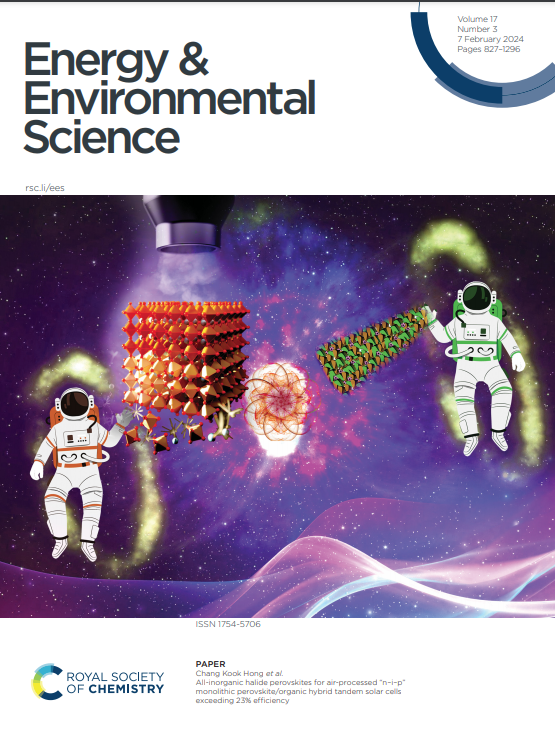An Unwanted Guest in the Electrochemical Oxidation of High-Voltage Li-ion Battery Electrolytes: The Life of Highly Reactive Protons
IF 30.8
1区 材料科学
Q1 CHEMISTRY, MULTIDISCIPLINARY
引用次数: 0
Abstract
Lithium-ion batteries (LIBs) are central to the urgent societal need to decarbonize both transportation and energy storage on the grid. Unfortunately, despite their attractive energy/power density, as well as high Coulombic and energy efficiencies, further improvement of this technology – especially their durability – is desperately needed. To support these efforts, our study focuses on fundamental understanding of the decomposition pathways for LIB electrolytes at the cathode-electrolyte interface (CEI), as the nature of these reactions directly controls the extent to which cell capacity and voltage decays in these systems. In this study, we employ electrochemical methods, coupled with product analysis using NMR spectroscopy and mass spectrometry, to determine the decomposition mechanisms in both model and technologically relevant electrolytes. Remarkably, we discovered the electrochemical formation of protons with high chemical activity, comparable to known superacids, at potentials relevant to practical Li-ion batteries. Their reactivity toward every individual component of the CEI provides a unified thermochemical origin for a myriad of side reactions that are commonly associated with the electrochemical reaction. In particular, electrochemically generated protons react with intact EC molecules to form CO2 and other short and long chain ethers. They also undergo an acid-base reaction with LiPF6, to form the weaker acid HF, and with the cathode active material, leaching transition metals into the electrolyte. Collectively, the results of this study all point to the urgent need to either mitigate this proton formation or introduce benign harvesting additives via new electrolyte design strategies.高压锂离子电池电解液电化学氧化中的不速之客:高活性质子的寿命
锂离子电池(lib)是实现交通运输和电网储能脱碳的迫切社会需求的核心。不幸的是,尽管它们有吸引力的能量/功率密度,以及高库仑和能源效率,但这项技术的进一步改进——尤其是它们的耐用性——是迫切需要的。为了支持这些努力,我们的研究重点是对锂离子电池电解质在阴极-电解质界面(CEI)的分解途径的基本理解,因为这些反应的性质直接控制着这些系统中电池容量和电压衰减的程度。在这项研究中,我们采用电化学方法,结合使用核磁共振波谱和质谱的产品分析,来确定模型和技术相关电解质的分解机制。值得注意的是,我们发现了具有高化学活性的质子的电化学形成,与已知的超强酸相当,与实用的锂离子电池相关。它们对CEI的每个单独组分的反应性为通常与电化学反应相关的无数副反应提供了统一的热化学起源。特别是电化学生成的质子与完整的EC分子反应生成CO2和其他短链和长链醚。它们还与LiPF6发生酸碱反应,形成较弱的酸HF,并与阴极活性物质发生反应,将过渡金属浸出到电解质中。总的来说,这项研究的结果都表明,迫切需要通过新的电解质设计策略来减少质子的形成或引入良性的收获添加剂。
本文章由计算机程序翻译,如有差异,请以英文原文为准。
求助全文
约1分钟内获得全文
求助全文
来源期刊

Energy & Environmental Science
化学-工程:化工
CiteScore
50.50
自引率
2.20%
发文量
349
审稿时长
2.2 months
期刊介绍:
Energy & Environmental Science, a peer-reviewed scientific journal, publishes original research and review articles covering interdisciplinary topics in the (bio)chemical and (bio)physical sciences, as well as chemical engineering disciplines. Published monthly by the Royal Society of Chemistry (RSC), a not-for-profit publisher, Energy & Environmental Science is recognized as a leading journal. It boasts an impressive impact factor of 8.500 as of 2009, ranking 8th among 140 journals in the category "Chemistry, Multidisciplinary," second among 71 journals in "Energy & Fuels," second among 128 journals in "Engineering, Chemical," and first among 181 scientific journals in "Environmental Sciences."
Energy & Environmental Science publishes various types of articles, including Research Papers (original scientific work), Review Articles, Perspectives, and Minireviews (feature review-type articles of broad interest), Communications (original scientific work of an urgent nature), Opinions (personal, often speculative viewpoints or hypotheses on current topics), and Analysis Articles (in-depth examination of energy-related issues).
 求助内容:
求助内容: 应助结果提醒方式:
应助结果提醒方式:


